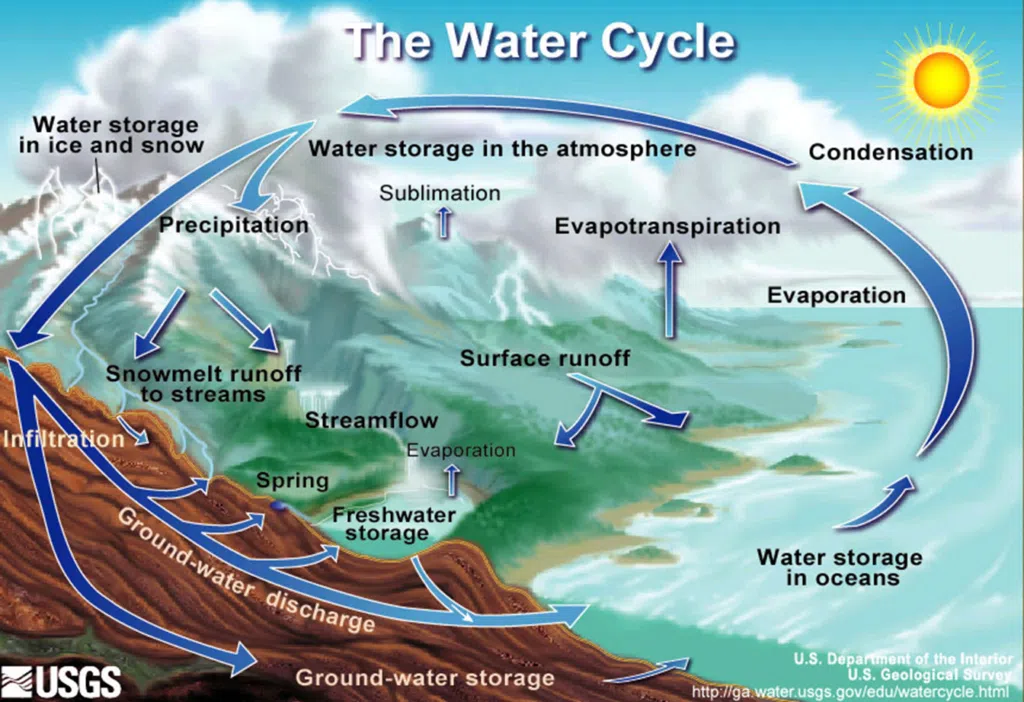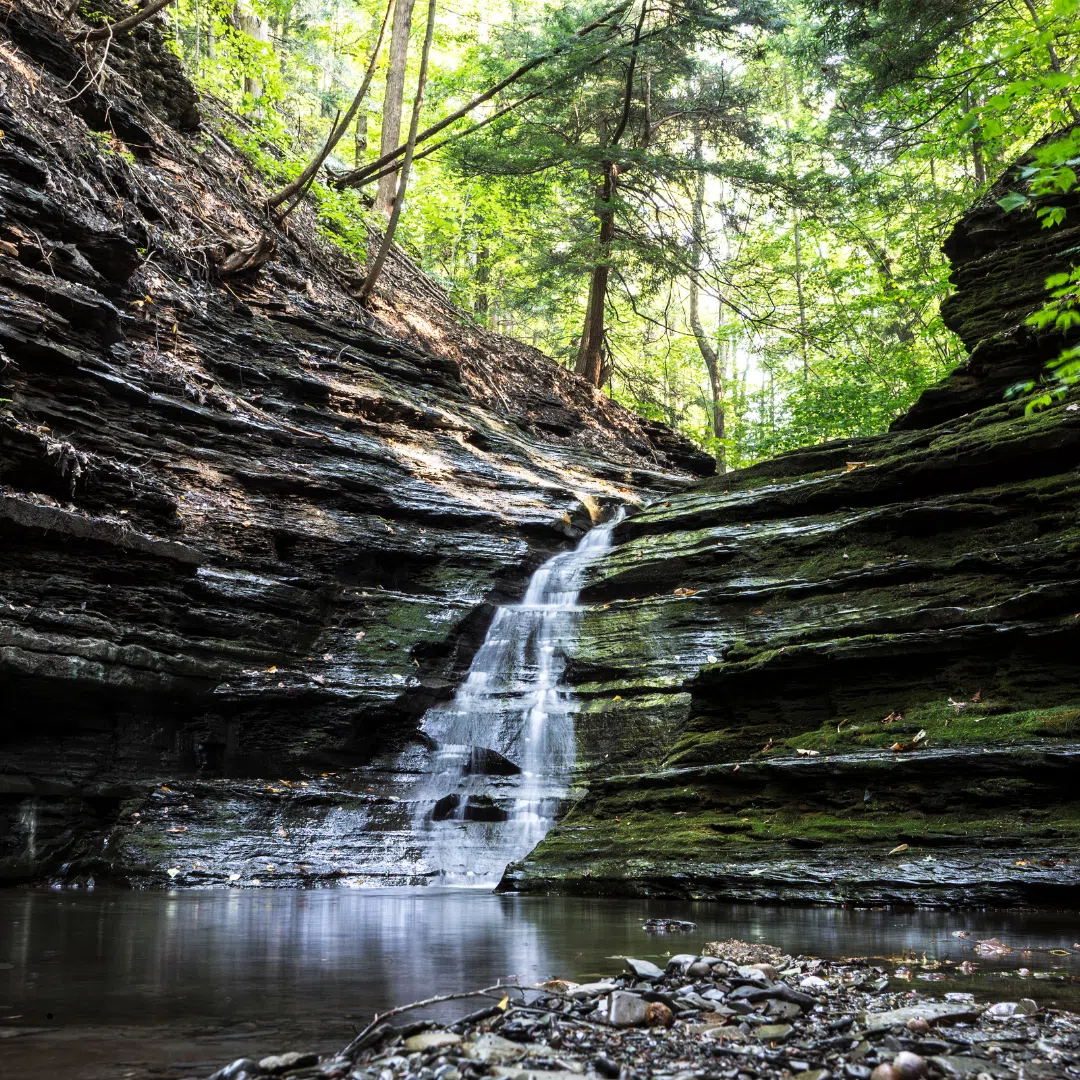Water. 73% of Earth is covered in it, and of all that water, 97% is ocean water, leaving just 3% as fresh water. Of that fresh water, less than 0.02% is visible and easily accessible. The rest can be found in permafrost, groundwaters, and ice caps or glaciers.
Women are about 55% water and men about 60%. Water in our bodies is vital for cell health, lubricating joints, as a shock absorber for our brains and for fetuses, flushing waste, and for metabolism, among other things. No living organism can exist without water to some degree.
All the water on the planet has been here since the beginning of time and it is all that will ever exist. It moves through the water cycle with precipitation bringing water to the surface, evaporation and transpiration returning water to the atmosphere, and runoff and percolation moving surface water from one place to another. While the amount of water on Earth has stayed constant, where and what form it is in varies based on many factors.

“We forget that the water cycle and the life cycle are one.” –Jaques Cousteau
Public water comes from aquifers or reservoirs, private wells draw from aquifers. Aquifers are huge areas of underground water that have built up over centuries of precipitation that has seeped through layers of rock, and are recharged when there is significant precipitation, such as heavy rains or snow melt. Recharge rates vary depending on the climate and the type of rocks in the aquifer, but it is not a fast process. With water being a necessity for health, sanitation, industry, nature, and agriculture, water usage must always be balanced against what an aquifer can support. Think of the aquifer as a bank account, if you continually pull money/water out, without depositing money/water, eventually you will have no money or water to use.
Currently, Connecticut is in a drought, with much of the state experiencing moderate drought conditions, which you can check at CT drought monitor. For any other state, go to https://droughtmonitor.unl.edu/CurrentMap.aspx, click on the region of the country on the map, then the particular state you are interested in. These monitors are supported by several federal agencies and the University of Nebraska-Lincoln and are updated and released every Thursday morning.
We should always be mindful of water usage, even more so during drought times. To use less:
- Fix leaks.
- Turn off water when not actively using it.
- Install low flow faucets, toilets, and appliances.
- Select plants for your yard and lawn that are adapted to our climate and do not need more water than they can get from our normal precipitation.
- Use cooking water or water from showers and baths, known as gray water, for watering your indoor and outdoor plants.
We can’t make more water—but we can make better choices about how we use it.
Here’s to a season of mindful growth—even in dry times!

To learn more about The Meetinghouse’s approach to Regenerative Practices, visit Our Three Pillars or Nature.





